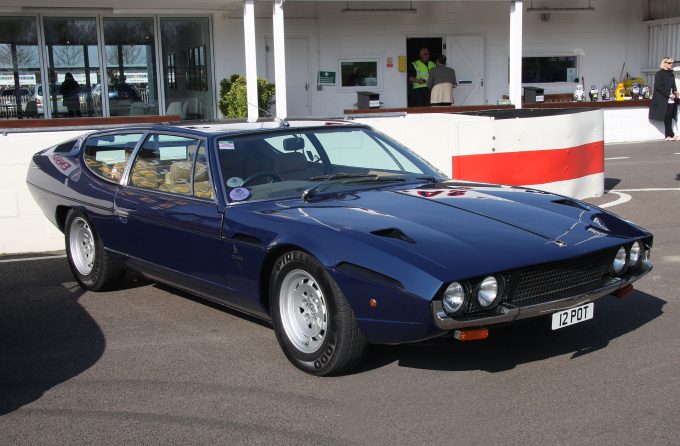Automatics are pretty much everywhere these days, but there was once a time where an authentic driver’s car meant one thing – you shift your own gears, or you buy something else. In an era where driver involvement was crucial, automatic transmissions were seen as power-sapping and sacrosanct.
In the last 15 years, dual-clutch automatics and ultra-fast shifting torque converters have turned the tables on manual, providing superior acceleration and efficiency. Until this era, it was seen as anathema to a sporting car’s intended purpose and thus a novelty. That’s why this list mostly comprises of classic and older cars, with one notable exception. Here are ten of the most interesting automatic variants of cars you would not expect, in no particular order.

Mitsubishi Lancer Evolution VII GTA
A balls-to-the-wall rally-winning rocket like the Lancer Evo is not something you’d expect to be tied down with a self-shifting gearbox. With the same 206kW/385Nm turbocharged motor as the regular Evolution GSR, it was not short on performance.
Paired with the ‘Invecs-II’ five-speed automatic, the GTA took on a more Grand Touring character. Diamond-cut alloys and a more subtle appearance were also part of the equation .
To many, the Peugeot 205 GTI is the quintessential hot hatch, possessing a rawness and driver connection which has been diluted in modern hot hatches.
It may surprise you to learn that an automatic version was offered for Japan in 1991. Initially 200 versions were earmarked for export, but trade negotiations encountered tricky waters and only 33 are said to have been produced.
The automatic 205 GTI featured ‘Pepperpot’ style alloys, as well as air conditioning and power steering as standard. It also had the taller bonnet of diesel-powered 205s. Luxury appointments and auto may seem antithetical to the hot hatch ethos but it would make for a very interesting car nonetheless.
Not so long ago, the default Ferrari gearbox was an open-gated manual, with a chrome gear lever to slice through the ratios.
For its 1976 grand tourer, Ferrari turned to none other than General Motors for its TH400 three-speed automatic to bolt up to its V12 powerhouse.
In the mid-90s, Ferrari again turned to GM for its four-speed automatic, albeit adapted for transaxle configuration by Ricardo,. The 456 GTA was the final Ferrari to feature a conventional torque converter auto.
Honda’s aluminium sporting flagship was hailed by all as the ‘everyday supercar’, combining Honda reliability with Ayrton Senna-honed dynamics and a screaming, 8,300rpm V6.
A four-speed automatic was available alongside the 5- or 6-speed manual, albeit in the engine’s lowest state of tune. The auto was usually slower than the manual by around one second to 100km/h. Its modern successor is a hybrid, auto-only proposition.
Lotus is a marque that has always encompassed purity and lightness — two philosophies seemingly antithetical to an automatic transmission.
In particular, the Exige and Elise cars embody Colin Chapman’s ideals with their extruded aluminium chassis and no-frills interiors.
The Series 3 Exige of 2012 received the same Toyota-sourced 2GR V6 engine as the more grand-touring focused Evora — as well as the option of a six-speed automatic.
Interestingly, the 2022 Emira will feature this drivetrain as well as the same 2.0-litre turbo as the Mercedes-AMG 45 series cars.
Reams of magazine paper and terabytes of data have been spent bemoaning the absence of manual transmission in the A90 Supra. We aren’t going to go there, but the Supra is a car with a cult following in the tuner crowd — especially the fourth-gen A80 series, which sees 1000hp quie regularly.
In spite of this, the Supra is a dubious addition to this list, as it was conceived as a grand tourer to do battle with the Datsun/Nissan 280ZX. Automatics are less sought-after for tuners, so it may be the best option to find a Supra that hasn’t been boosted and thrashed to within an inch of its life.
original Mini (minimatic, Rover Mini),
Until recently, city cars and automatics simply didn’t mix. Tiny motors could ill-afford the parasitic loss of a torque converter and the loss of extra ratios.
The original Mini was quie a pioneer, being one of the first city cars to offer a conventional automatic in 1965.
Being a four-speeder with a gated design, it would be decades before contemporary city cars offered a similar configuration.
The wedge reigned supreme in the 1970s and 1980s, with the Vector W8 arguably taking this to its natural conclusion.
The W8’s fighter-plane inspired cockpit and 6.0-litre twin-turbo V8 lived up to the swoopy exterior’s promise.
As one of the most outrageous designs of the era, you wouldn’t expect a GM three-speed automatic gearbox to be the only option.
Toyota Yaris GR RC
The Toyota GR Yaris is undoubtedly the cult icon of our generation. With its compact dimensions, clever AWD system and awesome three-cylinder turbo generating 200kW and 370Nm. These attributes make it a tuner’s delight and it is arguably the modern successor to the Ford Escort RS Cosworth. The three-door body was homologated for motorsport purposes, but hold your breath for the weird part. There is a version in Japan with a 1.5-litre, naturally-aspirated three-cylinder developing a measly 88kW, with a dozy CVT transmission. It also loses the AWD system, directing all that might to the front hoops. Still, what a fascinating vehicle to those who were unaware of it.
The last manual Lamborghini was sadly offered nine years ago, following in the hoofsteps of its Prancing Horse arch-rival by two years in becoming an auto-only supercar marque.
Decades ago, a manual transmission was sacrosanct to every sports, or supercar, so the notion of a self-shifting Lamborghini would’ve seemed outrageous in the 1970’s. Just as arch-rival Ferrari (mentioned above) called on an American giant (GM) for its slushbox powered V12 grand tourer, so too did Lamborghini for the Espada. In this case, it was Chrysler’s Torqueflite three-speed.
Introduced in 1974, only 55 buyers opted for the automatic, as the idea of an automatic Lamborghini was harder to stomach back then.







